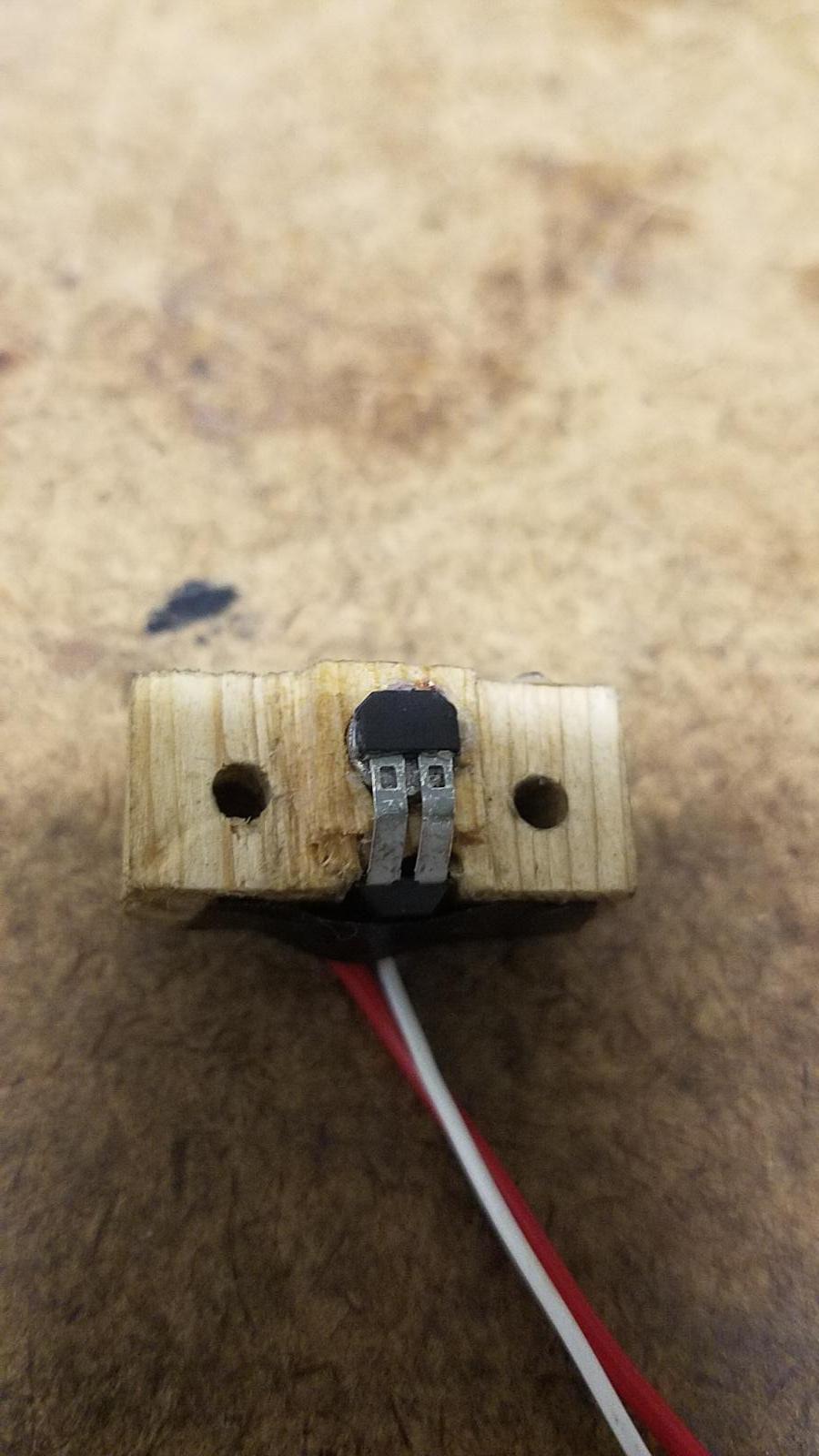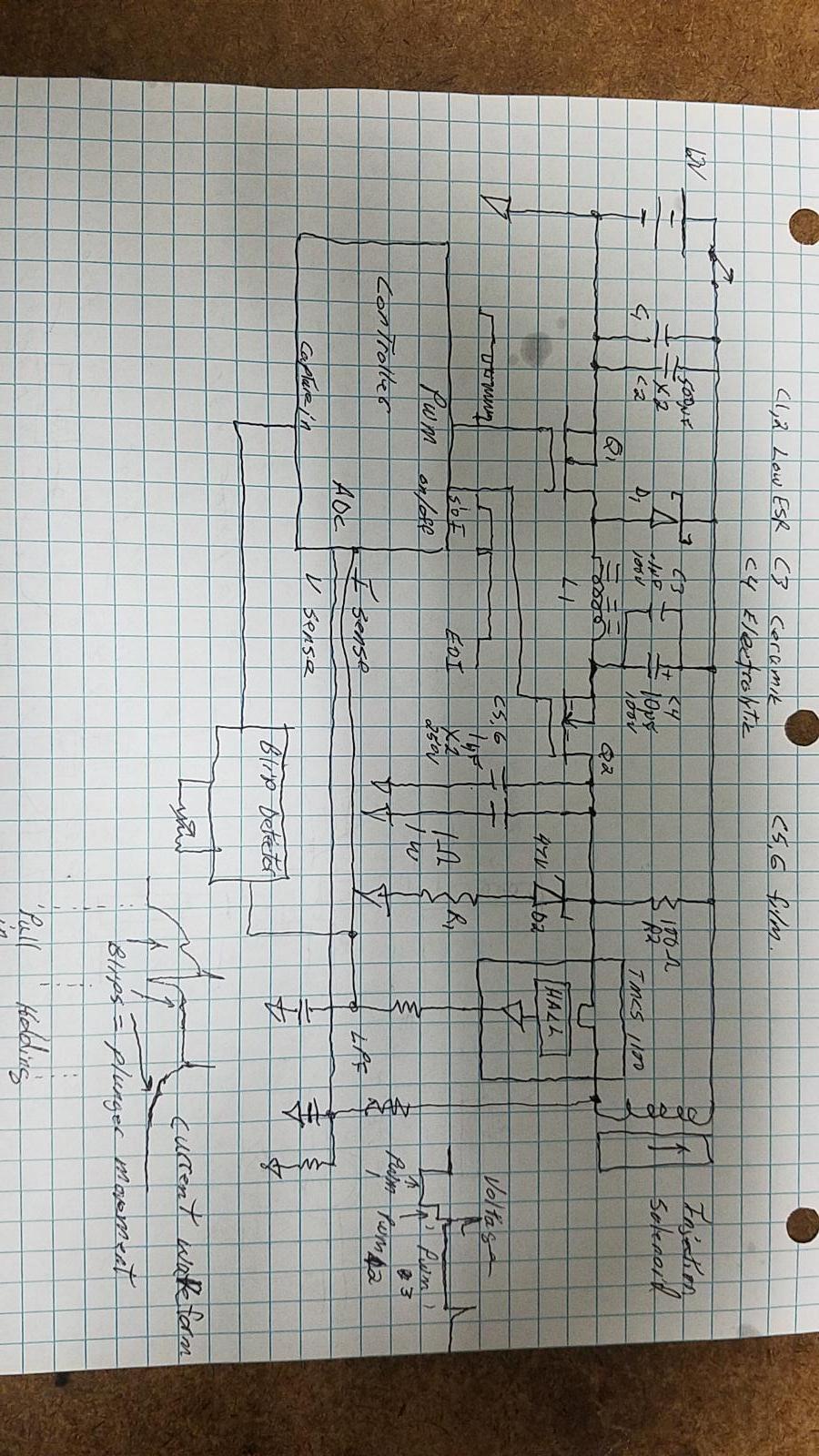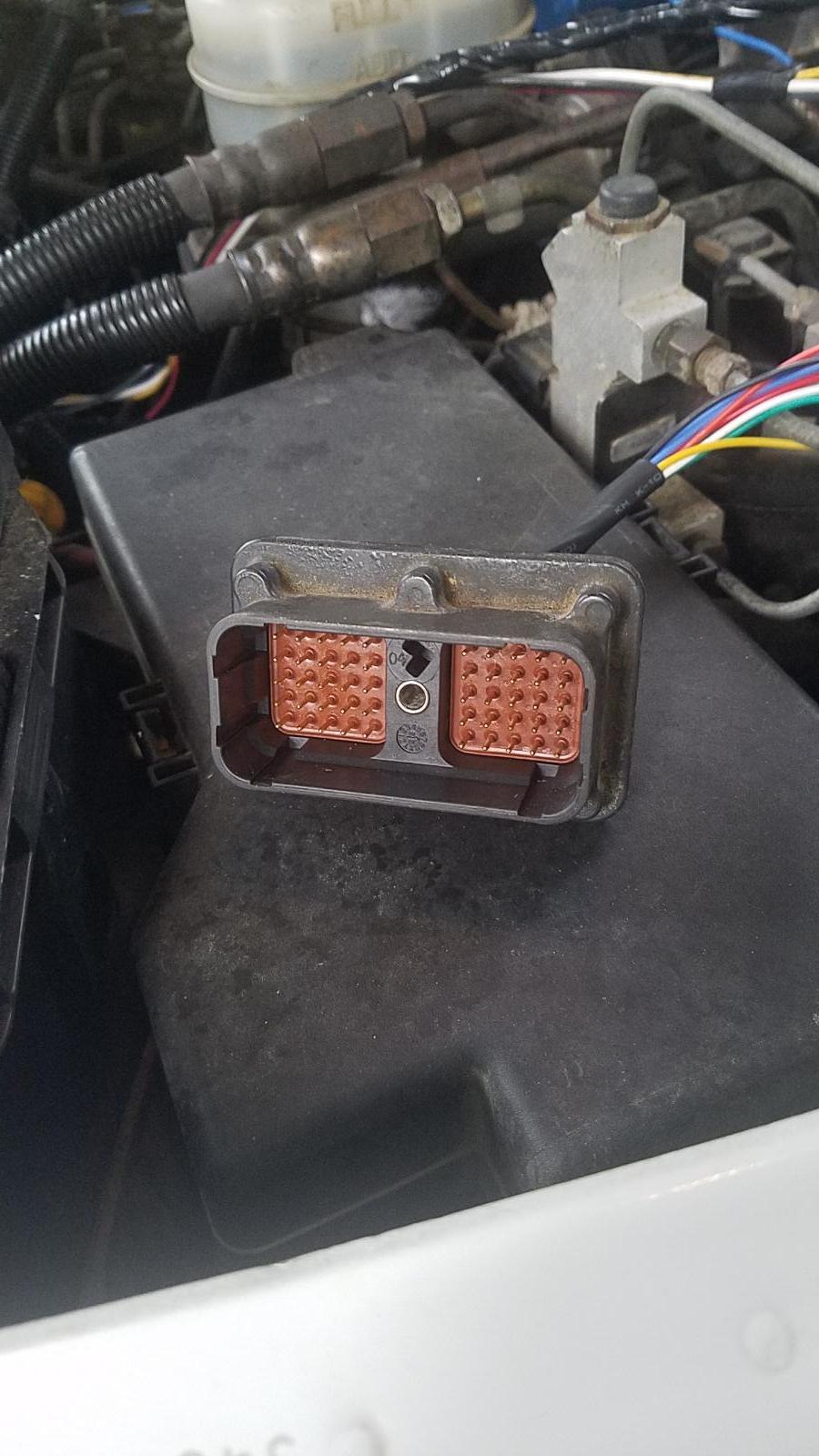Everything posted by Great work!
-
Just rebuilt 47re myself and it went out 5 days later
So the fluid goes out the front pipe to the heat exchanger then to the cooler in the front of the truck and then back to the rear pipe. The rear pipe fitting goes to a hole bored in the bushing that supports the output shaft near its middle. The bushing is between the main guts and the OD. The output shaft is hallow and has holes cross drilled through it. All the lube for the planetary gears and OD unit goes through the shaft. Obviously crud has clogged the shaft and cooling system. Probably from the previous cooking and then the drilling of the check valve. That shaft has to be cleaned out. There is a plug in the end that has to be removed now to get all the crud out. Your trans cooling system need replacing or serious flushing. The converter maybe full of crud just waiting to plug things up again. Your transmission was starved for lube and is likely irreversibly damaged. I recommend you find another transmission.
-
Traction Bars for short box 2wd
Are you running a two piece drive shaft? Was it modified? If so it needs phased correctly so all the u joints are in line.
-
Truck Not Running Right
Check fuel pressure too or you could roast a VP. DC volts is important too should not go over 15 or under 11 while running.
-
APPS sensor adjustment and reset difficulties.
It's just like SD cards and usb thumb drives they have limited cycles like 100K. So if the ECM stores data every few seconds or minutes it wears on it. Example updating the minutes in the engine hour counter.
-
APPS sensor adjustment and reset difficulties.
EEPROM and flash memory has a life expectancy in these ECMs @Auto Computer Specialist may be able to assist you.
-
Cummins front and rear shaft seals.
I have to say I'm not a fan of the dry fit seals used on the crank. I've had bad luck with leaks. I have replaced a few on my own and others engines. The crank looks fine, sometimes I clean them up with fine Emery cloth. I use the seal installer that usually comes with it and center the seal housing as best I can before tightening the bolts. I never tried the shaft saver ring type most parts stores give me deer in the headlights look when I ask about a kit. Does it require machine work? Anyone use an alternative traditional seal?
-
APPS sensor adjustment and reset difficulties.
Calibration data is stored in ECM. If the data is corrupted or out of a certain range the ECM will use a default value to get by. Is your wait to start light delayed? Sounds like ECM issue.
-
Just rebuilt 47re myself and it went out 5 days later
Definately air check. Stack the converter, pump, front and rear clutch packs together and air check. Then air check the OD and bands. The roller clutch spring piece in the OD is easy to put together wrong and can cause a shutter when od engages. Always replace the clutch pack piston lip seals . Buy some pieces of plastic pipe and cut some access ports to push the springs down to get at them snap rings. Use a c clamp or drill press. The OD spring is a pain best to use a press.
-
Just rebuilt 47re myself and it went out 5 days later
Maybe the front pump bolts loosened up that can cause pressure leaks to other channels and sucking in air and of course fluid leaks.
-
Just rebuilt 47re myself and it went out 5 days later
So are you saying the front shaft seal is destroyed or pushed out? I use a ratchet strap to hold the converter back then slip it out once a couple bolts are in. If converter slips out of place and gets jammed it destroys things. You have to completely disassemble the valve body, to do a good job. Take lots of pictures and notes. Clean it all out use round bore type brushes. Finish with very hot soap and water and dry every thing in a warm oven.
-
First drive with VP 44 project
No, I have not done that much research. I have a 12 valve motor and a p pump in the shed. Believe me the temptation to thrown one on was there. This project had a lot of set backs. This is an experimental vp sensor I carved from wood. LOL. It has a magnet in it too. I didn't work as required. I know why now. The modern sensors have more integrated stuff in them not plain like the original sensor .
-
First drive with VP 44 project
@JAG1 the vp is not like a 1st gen VE or P pump. There is no mechanical connection to a helix or valve that is synchronized to the shaft rotation. The injection solenoid doesn't just intervene and modify a mechanical process. So no there is no simple way to make it work. You would not be able to start and end an injection event. I suppose the timing piston could be gutted in a way and a threaded shaft could be rigged to set timing advance to a fixed number like 15 degrees like the 12 valve, but it still won't run.
-
First drive with VP 44 project
Thank you all. The plug and play solution is not going to be easy. The Duetch ECM connector is not available in a wire friendly format so a pcb would be required to convert it to another form. The mating connector is but that's already on the harness. Second the connection to the vp speed sensor is delicate. It would probably take a new VP top cover to do it right which would require machine work. We would still be at the mercy of Bosch for the sensor although one could be made with a 3D printer, still thinking about it. The solenoid wires are not very long so putting plugs on them is not easy. As for massive fueling the EPA has been cracking down hard on the diesel tuner makers "tunes" is a bad word now, granted are trucks are not subject to the stricter standards as the newer ones but the EPA is highly politicized.
-
First drive with VP 44 project
W-T I'm sorry i think i misunderstood your question. I have a simplified hand drawn drawing that may clear things up. I not really doing anything un -conventional, except the low side switch buck converter. BTW the solenoid is only about 30 turns (7 feet) of 25 ga. magnet wire so the inductance is comparatively low. Inductance delays current, but current is what moves the plunger. So it was designed with low inductance to get things moving fast. Unfortunately that makes it very hungry for current.
-
First drive with VP 44 project
The back EMF or free wheeling I sometimes call fly back dates back to the old TV lingo. It can be delt with recirculating, snubber or clamp or a mix. Recirculating diode was about 4X slower and a snubber became really large to be effective and about 2X slower. So I used a zener - resistor clamp with a small amount of capacitance. The back EMF can be low voltage over a long time or a high voltage over a short time. The solenoid valve must respond in both directions as fast as possible to have a good clean and accurate injection. Straight away high frequency PWM was tried but resulted in high noise, skin effect and large eddy currents in the plunger. So I used a buck converter with minimal capacitors for fast response while balancing low ripple. The timing control valve is more conventional 10 ohms and high winding count so a snubber was used there. To be less technical think a cordless drill suddenly stopping when the trigger is released. That freezing of the armature is an example of extreme back EMF clamping ( a dead short across the motor terminals) we do not want that. We want the solenoid loosely clamped so it will "coast" easily.
-
First drive with VP 44 project
@W-Tthe micro runs at 72 mhz internally and sampling rate is programmable. I set conversion time to 25 microS. The switching frequency is around 150 khz. Most of the noisy stuff is the huge fly back spikes when the sol. Is de energized (you can see it in the sensors) and with its low resistance and high current even the clamp circuit gets hot. The current has small blips that occur when the plunger moves, they must be detected in order to calculate the dead time from energized to movement and vice versa on release. To much noise hides the blips. The driver circuit has to be fast and the fly back at the end must extinguish rapidly, mine is clamped at 51 V. I think bosch took the other approach for speed and less noise, they even used the main driver in linear mode and active clamping. That's living on the edge. Don't bother on relocating. The ECM is pretty tough and that connector is only made for through hole pcb mounting, no wire crimping. So that would probably create more points of failure.
-
First drive with VP 44 project
@Mopar1973Man CCD will be coming along I have to decide if it will use the current ST micro or a Mega. The ST while vastly more powerful is limited to 3.3volt inputs which makes 5volt sensor interface a pain especially the high impedance temperature sensors. @W-T the factory ecm has multiple Crystals an EEPROM scratch pad and a large flash memory chip I suspect one of those has failed. The stm32f303 module has 8mhz crystal pll'd up to 72 mhz clock speed. The power dissipation on the bosch unit is insane it's linear regulation plus high wattage 2ohm resistor cooled by fuel. The inj. Solenoid is less than 1 ohm, quite a challenge to control. Mine uses a high speed switching regulator, much more efficient but still makes some heat. I may not be able to mount it under the hood because of high temps.
-
First drive with VP 44 project
First drive today no psg or ECM. Using my own. See it on YouTube
-
DIY vp 44 and ECM. It runs, very happy
Update the ECM is gone now. The connector was removed and I attached wires to it. The ecm side connector is available new but is expensive to buy only one. This cleaned up the messy wiring a lot. I also made a shielded cable from my VP speed sensor to the controller. After some testing I found the shield wasn't really necessary.
-
01 24v dead in the water....
Sometimes pouring cold water over the IP can temporarily fix it. If that is the case then the pump is definitely bad.
-
Cam worth the money?
I really wish they would have made the gear easier to remove from the cam. They should have left the fuel pump lobe on the 24V too. I guess you could turn the truck upside down to fix the leak.
-
Angry & can't do it anymore, serious iQuad timing issues
Mine are a little on the tight end but that was 50k miles or so ago. It does seem to rev slightly happier like that. Main thing is the valve stems grow with heat so there has to be a few thousands of slack when hot or else the valve won't seat all the way and the edge of the valve and seat will overheat.
-
TC not fully unlocking on 1998.5
Monitor the orange black wire in the middle PCM connector by back probing or a piercing probe connect a volt meter, other lead to ground using alligator clip or similar. Need long leads or tape meter to window. Should be 12v or more when converter unlocked and close to 0v when locked. Test drive and watch for bouncing readings. Other electrical is pinched melted or cracked insulation in the wiring inside the tranny or outside. Are you sure it's not jumping in out of limp mode that justs leaves in 3rd gear all the time . A test light works too. On the mechanical side was there any screens in the TC solenoid or valve body they need cleaned. Other problems is sticky or worn out spool valves in the VB (common) or severe restriction in the cooling lines or coolers , blow it all out. And finally a torque converter that is failing inside (falling apart).
-
Angry & can't do it anymore, serious iQuad timing issues
There is a little wear in the rocker bores are they real sloppy on the shafts? Not bad though. Boosted valve springs always add wear to any valve train.
-
Ok this is starting to make me mad
Great! These trucks have lots of electrical gremlins in them.






